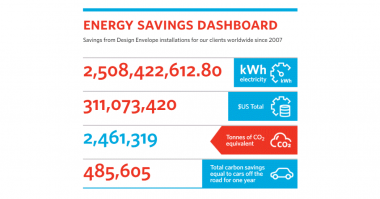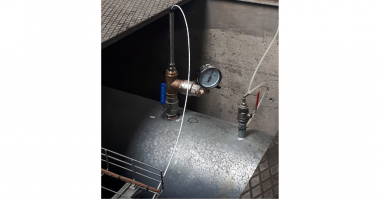Author: Jim Richter, President, Metraflex
With the Department of Energy’s recent rulings on pump efficiency, there is a greater push for the pump industry to focus on the entire system; and that means all components within the system. So while strainers might seem a small piece of this puzzle, they can have a great impact on reducing energy usage. With this motivation in mind, and accepting the fact that manufacturers should not always rely on 100-year old designs to meet today’s needs, our engineering team set out to design the new Metraflex low pressure drop strainer.
Strainers house perforated screens that catch dirt, leaves, scale, and other debris. Strainers protect pumps, valves, and other valuable downstream equipment installed in fluid systems from larger particulate that can travel through pipes. While it’s very common for commercial HVAC to use y-strainers, industrial applications sometimes use basket type strainers in their systems.
When I first thought about redesigning the strainer, it was my love of sailing that inspired me to think about how water flows around obstacles, such as how water flows around the keel of a boat. Upon reviewing the current and original strainer design from 1908 (see Figure 1), I realized that the flow through the strainer could be improved. Working with our team of engineers, we used sophisticated 3D modeling software to make a few major modifications to the strainer design.
In Figure 1, notice how the traditional design has a choke point in the casting which comes down (circled in
red). This original design restricts the flow of the fluid where it enters the top of the screen. Our engineering team decided to get rid of that piece of casting, push the screen to the front of the housing, change the angle of the screen, and make the low pressure drop strainer larger (Figure 2). Over the years, in an effort to save money and make strainers less expensive, strainer manufacturers kept shrinking the size of their products. Making the strainers smaller resulted in further restriction of flow, causing more energy to be required to push fluid through the strainers. Therefore, we believed that making design changes would improve the flow through the strainer. We used computational fluid dynamics (CFD) software to understand how these changes to the strainer design would impact the flow through the strainer.
Once our engineering team was happy with the new LPD Y-Strainer design (Figure 2), we printed the 3D
model with our in-house 3D printer. These smaller printed samples were then taken to a local lab for flow
testing. We tested both our old design and the new design and compared results. After testing proved the new design was in fact better, we scaled it up and manufactured the Metraflex LPD Y-Strainer. Then we sent our LPD Y-Strainer along with a leading competitor’s product to the Utah Water Research laboratory for state-of-the-art independent flow testing.
The Utah Water Research Laboratory utilized sophisticated instrumentation to provide Metraflex with comprehensive reports on the performance of our new LPD Y-Strainer. We received performance data at different flow rates for both our strainer and our leading competitor’s product, and we were amazed by the results. Then we took testing one step further. Testing a clean screen does not simulate real-world application. There are always some form of debris floating in these pipes, so we blocked off half of our screen (Figure 3).
Even with a 50% blockage, our new strainer worked better than our competitor’s completely clean strainer.
Why is this so important?
Reduced Maintenance – most maintenance crews have to clean their strainers every couple months. Now, the new Metraflex LPD Y-Strainer will allow maintenance teams to clean their strainer far less frequently, freeing up their time to focus on other maintenance needs. The Metraflex LPD Y-Strainer also outperforms basket strainers for industrial applications.
Save Energy – improving the flow of fluid through the strainer means using less energy. Using less energy means SAVING MONEY. Use our Energy Savings Calculator to see how much you could be saving in energy costs each year – just by upgrading your strainer. In many cases, the new LPD strainer can pay for itself in less than a year!
Strainers are a component that nobody thinks about. They have been around for 100 years and engineers put them in their systems without comparing one strainer to another. The Metraflex LPD Y-Strainer is not your grandfather’s strainer. It has been re-engineered to help end users improve flow through their systems, reduce energy usage, and save money.
For more information about the LPD Y Strainer, visit Metraflex!







Comments